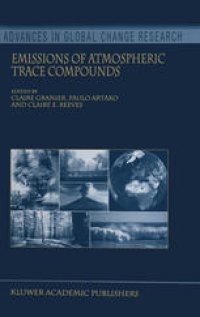
Ebook: Emissions of Atmospheric Trace Compounds
- Tags: Meteorology/Climatology, Atmospheric Protection/Air Quality Control/Air Pollution
- Series: Advances in Global Change Research 18
- Year: 2004
- Publisher: Springer Netherlands
- Edition: 1
- Language: English
- pdf
The mathematical modelling of the transport and transformation of trace species in the atmosphere is one of the scientific tools currently used to assess atmospheric chemistry, air quality, and climatic conditions. From the scientific but also from the management perspectives accurate inventories of emissions of the trace species at the appropriate spatial, temporal, and species resolution are required. The chapter has discussed bottom-up methodologies to estimate global and regional emISSIOns. These methodologies are based on activity data, emission factors (amount of emissions per unit activity), and for some inventories additional parameters (such as sulphur content of fuels). To compile regional and global inventories researchers can either bring together estimates made at the national or sub-national level by national experts or directly estimate emissions based on activity rates from reports compiled by multi-national organizations such as the United Nations and the International Energy agency and on emission factors and other information available in the literature. In all cases the data used must be checked for transparency, consistency, comparability, completeness and accuracy. These emissions estimates must now be given finer spatial (usually gridded), temporal, and for some inventories species resolution. The location of major stationary sources (power plants, industrial complexes) is usually known, so the emissions can be directly assigned to the appropriate grid cell.
This book was conceived during the workshop "Emission of Chemical Species and Aerosols into the Atmosphere" which took place in Paris in June 2001, involving many experts who presented a number of state-of-the-art papers. Many of these papers are presented in this book where they are set in the wider context of other published work, providing comprehensive documentation of many aspects of this field of Earth science.
The book is divided into 12 chapters, most dealing with inventories of emissions related to anthropogenic emissions or biomass burning, emissions from vegetation and soils, emissions of mineral and sea-salt aerosols, and emissions of sulphur compounds from the oceans. The final three chapters show how atmospheric observations have been used to improve our knowledge of emissions, such as the use of isotopes, large observation networks as well as the latest inverse modelling techniques and their application to surface and satellite observations.